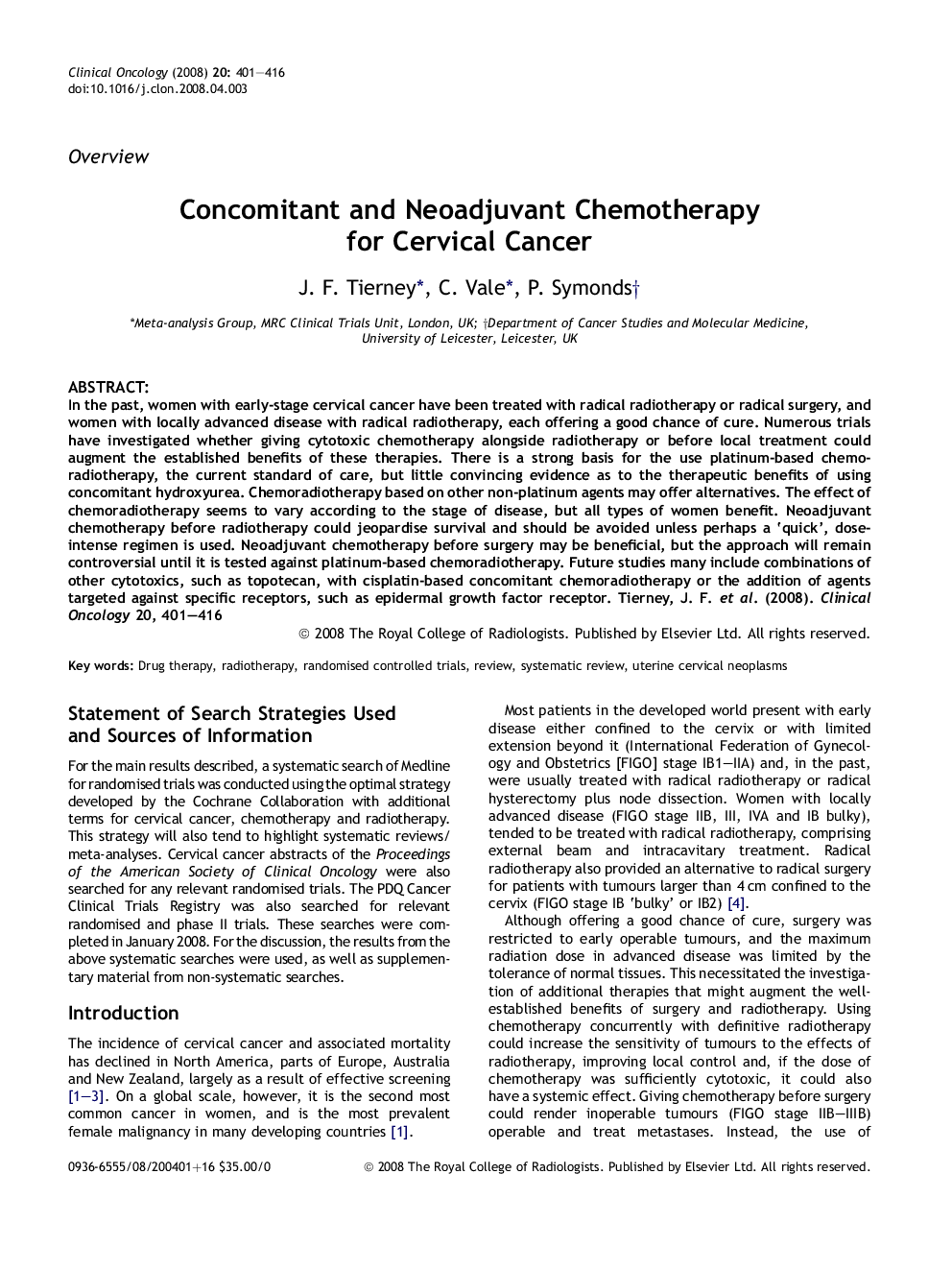| Article ID | Journal | Published Year | Pages | File Type |
|---|---|---|---|---|
| 5699803 | Clinical Oncology | 2008 | 16 Pages |
Abstract
In the past, women with early-stage cervical cancer have been treated with radical radiotherapy or radical surgery, and women with locally advanced disease with radical radiotherapy, each offering a good chance of cure. Numerous trials have investigated whether giving cytotoxic chemotherapy alongside radiotherapy or before local treatment could augment the established benefits of these therapies. There is a strong basis for the use platinum-based chemoradiotherapy, the current standard of care, but little convincing evidence as to the therapeutic benefits of using concomitant hydroxyurea. Chemoradiotherapy based on other non-platinum agents may offer alternatives. The effect of chemoradiotherapy seems to vary according to the stage of disease, but all types of women benefit. Neoadjuvant chemotherapy before radiotherapy could jeopardise survival and should be avoided unless perhaps a 'quick', dose-intense regimen is used. Neoadjuvant chemotherapy before surgery may be beneficial, but the approach will remain controversial until it is tested against platinum-based chemoradiotherapy. Future studies many include combinations of other cytotoxics, such as topotecan, with cisplatin-based concomitant chemoradiotherapy or the addition of agents targeted against specific receptors, such as epidermal growth factor receptor.
Keywords
Related Topics
Health Sciences
Medicine and Dentistry
Oncology
Authors
J.F. Tierney, C. Vale, P. Symonds,
